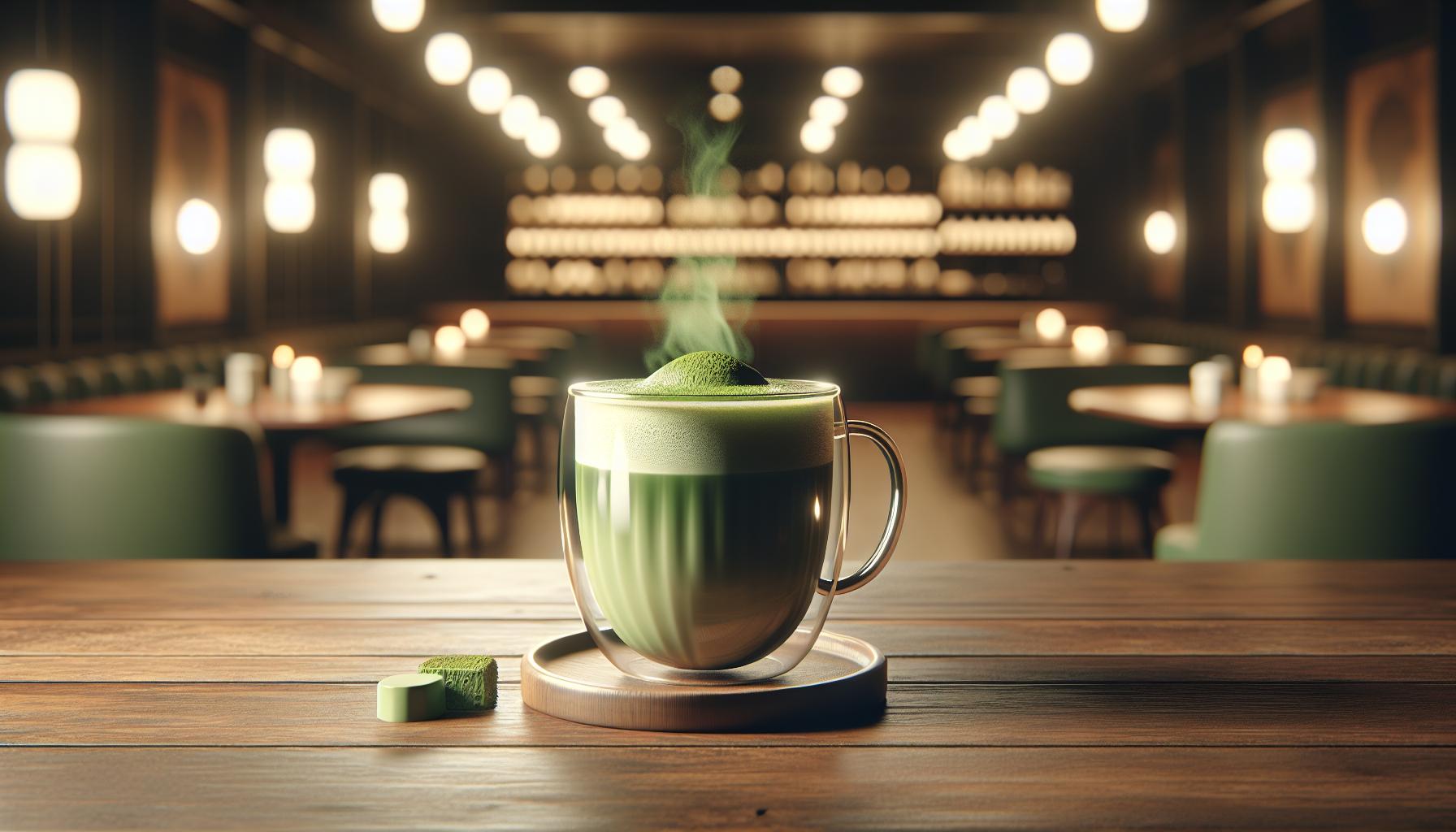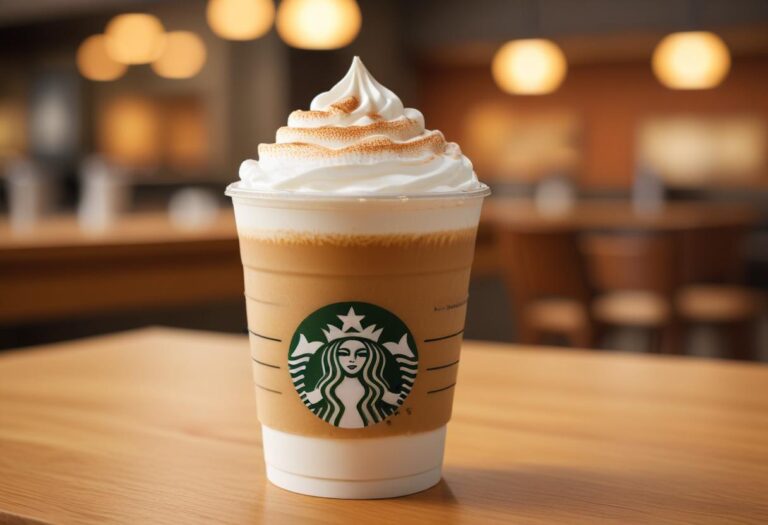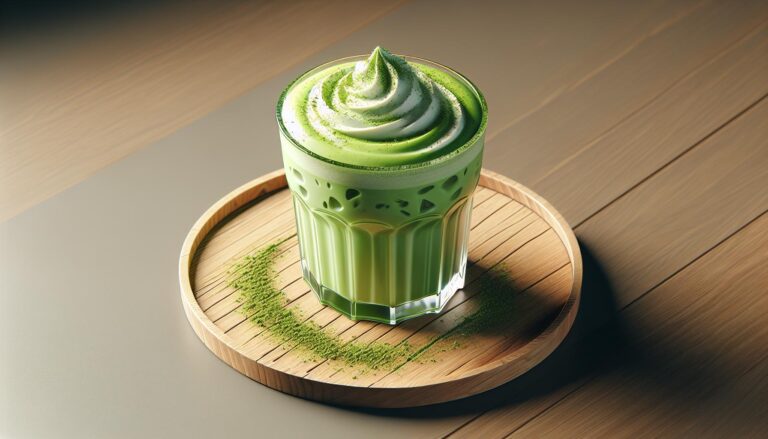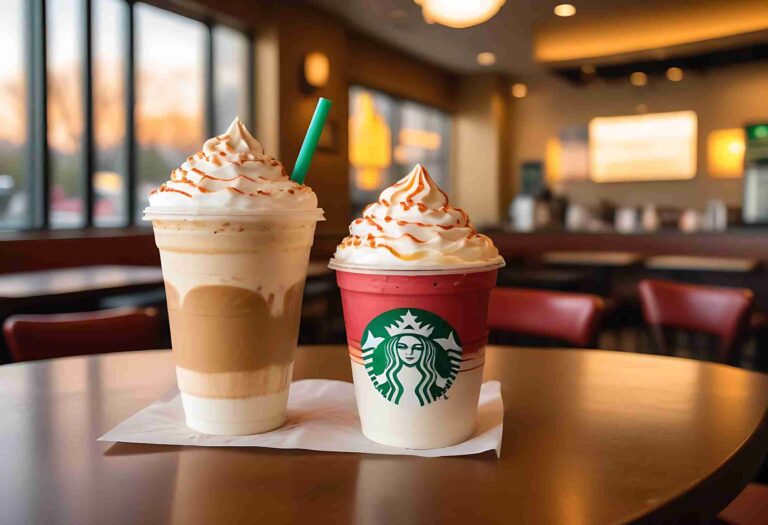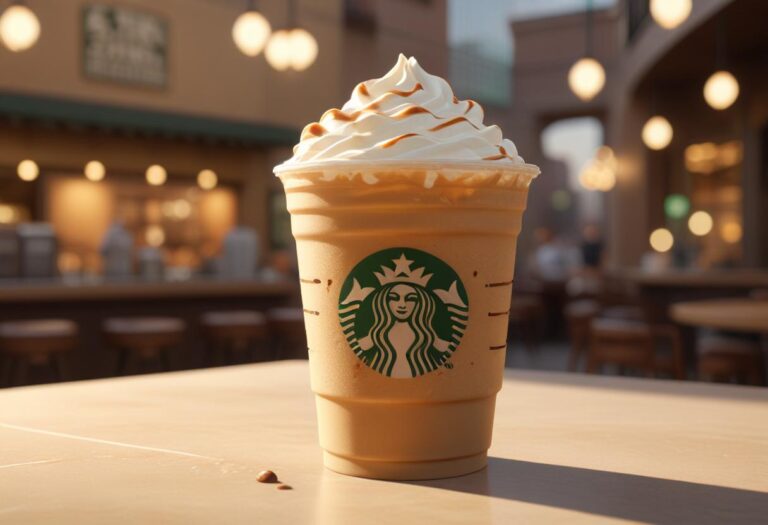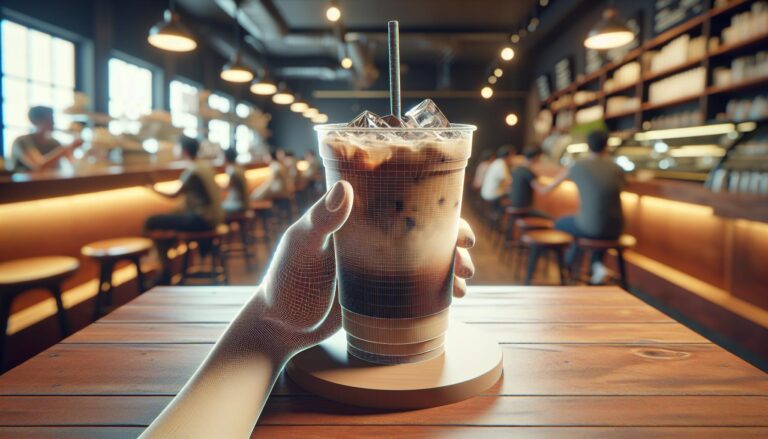Starbucks Matcha Latte Caffeine Content: All You Need to Know!
How much caffeine is in a Starbucks Matcha Latte? A Starbucks Matcha Latte contains approximately 80 mg of caffeine per 16-ounce (grande) serving. This smooth and creamy beverage combines matcha tea blend with steamed milk, offering a delightful balance of flavor and energy.
In this article, we will explore the caffeine content of various coffee drinks, with a special focus on popular beverages from Starbucks.
Key Takeaways
- Moderate Caffeine Content: A tall (12 oz) Starbucks matcha latte contains about 80 mg of caffeine, significantly lower than a similar-sized cup of regular coffee, which has approximately 235 mg.
- Unique Blend of Ingredients: The matcha latte combines Starbucks’ matcha powder mix, which includes sugar, with creamy milk, offering a flavorful alternative to traditional coffee.
- Health Benefits of Matcha: Matcha contains both caffeine and L-theanine, an amino acid that promotes relaxation and focused energy, providing a smoother and more balanced caffeine boost compared to coffee.
- Source and Quality of Matcha: Starbucks imports its matcha from high-quality sources in Japan, such as Uji, Nishio, and Kyoto, ensuring vibrant color, rich flavor, and a higher concentration of beneficial compounds like L-theanine and antioxidants.
- Consumer Preferences: Customers appreciate the smooth and balanced taste of Starbucks matcha latte, along with its calming yet energizing effects, making it a popular choice as a coffee alternative.
Overview of Starbucks Matcha Latte
Starbucks matcha latte offers a unique blend of flavors and benefits. Unlike regular teas and coffees, this drink combines the rich taste of matcha with creamy milk.
What Is Matcha?
Matcha is a powdered form of green tea. Unlike other green teas, you consume the entire leaf in powdered matcha, which provides more nutrients.
Matcha contains higher amounts of antioxidants than other green teas. It’s also known for its moderate caffeine levels, typically delivering around 25-30 mg per gram.
Starbucks’ Take on Matcha Latte
Starbucks blends matcha powder with milk to create its matcha latte. Starbucks adds sugar to its matcha powder, which can influence both the flavor and nutritional profile.
When you order a tall (12 oz) matcha latte at Starbucks, you’ll get around 80 mg of caffeine. For comparison, a tall (12 oz) regular Starbucks coffee contains approximately 235 mg of caffeine.
The matcha used at Starbucks is a mix of matcha powder and sugar, contributing to its sweeter taste compared to traditional matcha.
Also Read: Starbucks Iced Matcha Latte Caffeine Content
Caffeine Content in Starbucks Matcha Latte
Starbucks’ matcha latte contains about 80 mg of caffeine in a 12 oz serving. It’s a good option if you’re looking for moderate caffeine levels.
Comparing Caffeine Levels in Matcha vs. Coffee
A 12 oz Starbucks coffee has about 235 mg of caffeine. This makes matcha latte’s 80 mg much lower.
Coffee offers a strong jolt, while matcha gives a moderated boost. If reducing caffeine intake is your goal, matcha latte is an alternative.
Health Implications of Matcha Caffeine
Matcha caffeine comes with L-theanine, an amino acid. This combination provides calm focus.
Studies show that L-theanine promotes relaxation without drowsiness. If you experience jitters from coffee, matcha might offer smoother energy.
Starbucks matcha latte provides a balanced option with moderate caffeine levels and additional health benefits.
Analyzing Matcha Quality and Source
Starbucks’ matcha latte caffeine content intertwines with the quality and source of its matcha.
The Source of Starbucks’ Matcha
Starbucks imports its matcha from Japan. The country is renowned for its high-quality matcha. Major regions in Japan, such as Uji, Nishio, and Kyoto, produce top-grade matcha known for its vibrant color and rich flavor.
The Quality and Its Impacts
Starbucks uses a blend of matcha powder and sugar in their matcha lattes. The quality of matcha can affect the overall experience and health benefits. Higher quality matcha contains more L-theanine and antioxidants.
This blend provides a balanced energy boost and promotes relaxation due to the calming effects of L-theanine. Lower quality matcha may have fewer health benefits and a less pleasant taste.
Using high-grade matcha, Starbucks ensures that its lattes offer a good mix of taste and health benefits, making it a popular choice for many.
Also Read: Starbucks Frappuccino Caffeine Content
Consumer Reviews and Preferences
What Do Customers Say?
Customers often praise Starbucks matcha latte for its smooth taste and balanced energy. Many appreciate the unique flavor, noting the earthy sweetness of the matcha combined with the creaminess of the milk.
Reviews highlight the calming effect of L-theanine, providing a relaxed but focused energy.
Some users mention that the matcha latte serves as a good alternative to coffee, offering a more gentle caffeine boost without the jitters.
Matcha Popularity Trends
Matcha lattes have seen a rise in popularity over recent years. More people are opting for matcha due to its associated health benefits and distinct flavor profile.
Trend analysis shows a significant increase in social media posts and hashtags related to matcha drinks, indicating growing interest.
The demand for matcha products in cafes and stores continues to grow, with Starbucks matcha latte leading the market due to its consistent quality and taste.
Conclusion
Starbucks’ matcha latte offers a unique blend of caffeine and L-theanine, providing a balanced energy boost and calming effect.
With around 80 mg of caffeine in a 12 oz serving, it’s a great alternative to coffee for those seeking a moderated pick-me-up.
The high-quality matcha sourced from Japan ensures both taste and health benefits, making it a popular choice among consumers.
The smooth taste and balanced energy have garnered positive reviews, contributing to the rise in matcha latte’s popularity.
Starbucks continues to lead the market with its consistent quality and flavor, making their matcha latte a favorite for many.
Also Read: Starbucks Iced Latte Caffeine Content
Frequently Asked Questions
What is the caffeine content of Starbucks’ matcha latte?
A 12 oz serving of Starbucks matcha latte contains approximately 80 mg of caffeine. This amount is moderate compared to a typical cup of coffee, providing a balanced energy boost.
How does the caffeine in matcha affect energy and calmness?
Matcha contains both caffeine and L-theanine. While caffeine boosts energy, L-theanine promotes calm focus and relaxation, making matcha lattes a unique blend of alertness and calm.
How does matcha’s caffeine content compare to coffee?
Starbucks’ matcha latte has lower caffeine content (around 80 mg per 12 oz) compared to a standard cup of coffee, which typically contains 95 mg or more. This makes matcha a gentler option.
Where does Starbucks source their matcha?
Starbucks sources their matcha from Japan, known for producing high-quality matcha with a vibrant color and rich flavor, ensuring both taste and health benefits.
Why is the quality of matcha important?
Higher-grade matcha has more L-theanine and antioxidants, enhancing its health benefits. Quality matcha provides a balanced energy boost and promotes relaxation.
What health benefits does Starbucks’ matcha latte offer?
Starbucks’ matcha latte offers a combination of energy and relaxation due to the presence of caffeine and L-theanine. Additionally, it contains antioxidants, which contribute to overall well-being.
How do consumer reviews perceive Starbucks’ matcha latte?
Consumers praise Starbucks’ matcha latte for its smooth taste and balanced energy. The calming effect of L-theanine is also highlighted, making it a popular choice among customers.
Why has matcha latte become so popular?
Matcha latte’s rise in popularity is due to its distinct flavor profile and health benefits. Starbucks’ consistent quality and taste have further led to its market dominance, as reflected in increasing social media posts and interest.
Also Read:

